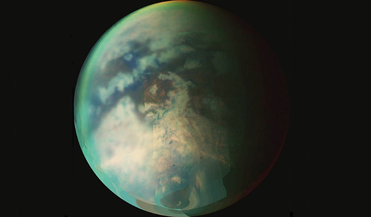 October 2019
Making the most of Blockchain in space
October 2019
Making the most of Blockchain in space
...-stop shop. It is using a blockchain-based cloud infrastructure, self-executing smart contracts and marketplace-specific ... “We’ve found that with the combination of our current cloud-based infrastructure and our new blockchain-based backbone for smart...
 January 2020
Discipline - a formula for success in the Earth observation market EO sector
January 2020
Discipline - a formula for success in the Earth observation market EO sector
... the globe to datacentres is best accomplished through the vast resources of major cloud providers. There is no need to reinvent the transport system when the cloud has already provided elastic resources to handle far more traffic than EO data...
 June 2020
Titan’s evolving atmosphere
June 2020
Titan’s evolving atmosphere
... complex refractory organic compounds combine and aggregate in the atmosphere where they form clouds that hide the surface (Fig. 1). These clouds, composed essentially of methane, ethane, and other simple organics, cause rain and particles...
 January 2021
Evolution of volatiles on the Moon
January 2021
Evolution of volatiles on the Moon
...little more than four and a half billion years ago an interstellar cloud began to collapse. The Sun was forming at the centre and ...just how cold are the PSRs? They are colder than the cloud tops of the gas-giant planets, colder even than the mountains...
 May 2022
Essential guide to the James Webb Space Telescope
May 2022
Essential guide to the James Webb Space Telescope
... illustrated by Hubble, shorter-wavelength infrared light allows us to peer through clouds of gas laced with cosmic dust (tiny solid grains that pervade gas clouds like smoke), revealing the otherwise hidden world of star formation. However...
 January 2023
China’s space ambitions fuel defence spending and global innovation
January 2023
China’s space ambitions fuel defence spending and global innovation
... propulsion, enable reusable launch. SATCOM: integrate communications across the US Department of Defense to form the combat cloud, layer Positioning, Navigation and Timing (PNT) services onto every communications slink, develop laser communication...